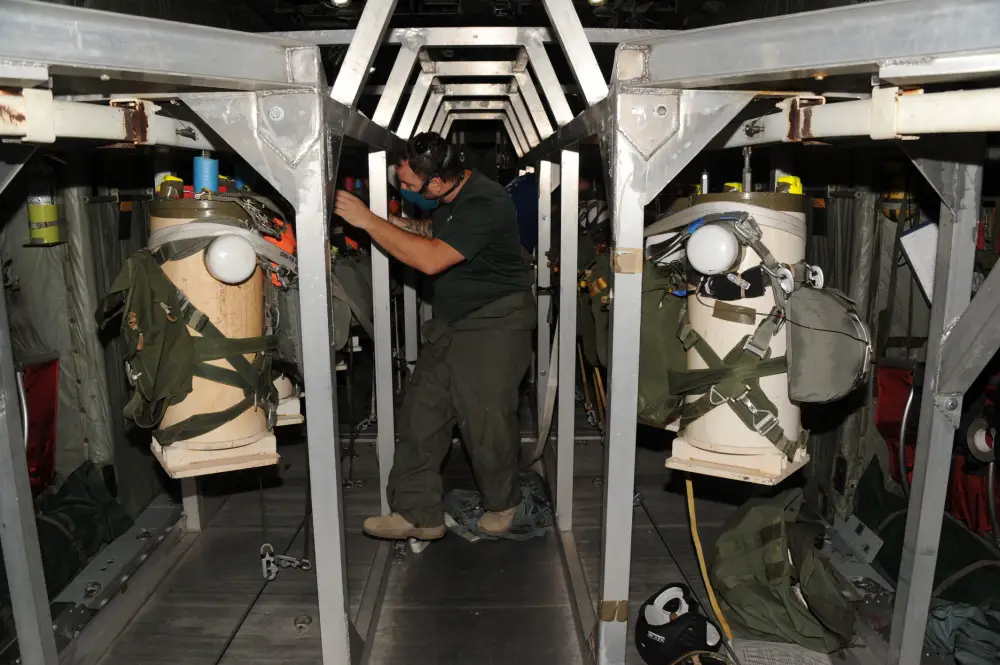Useful for seizing isolated air fields deep behind enemy lines, which can then be used to receive and deploy more troops and armaments, the tactic of mass parachute jumps was used successfully by American forces in both Iraq and Afghanistan. The T-11 personnel parachute offers jumpers a slow and stable descent, especially in high winds, and can support more weight than previous parachutes, a crucial advantage for warfighters who carry robust, heavy gear. Also, since the T-11’s canopy deploys slowly and further away from the aircraft than preceding parachutes, the Army was able to increase the gross cargo weight of a C-17 aircraft by 15,000 pounds, which allows the aircraft to safely carry more fuel or cargo.
During developmental testing at U.S. Army Yuma Proving Ground (YPG) in the early years of the 2000s, the T-11 proved to be a remarkably robust system, able to compensate for multiple kinds of malfunctions that testers intentionally rigged into it: When they tied the hem shut, the T-11 still inflated through corner vents. Even when testers put different reefing lines throughout the canopy and tried to restrict airflow inside, it still inflated. Now long-fielded, the T-11 is still returning to YPG for further refinements and improvements. In addition to testing a new pack tray, testers are currently testing improvements to the T-11’s reserve parachute, which Soldiers count on in the unlikely event the T-11’s main parachute doesn’t deploy.
The testing didn’t utilize live jumpers, instead using torso mannequins with stubs for arms to simulate jumpers. The mannequins were ballasted with weight, then loaded onto an aluminum deployment rack specially designed and constructed by YPG engineers that is loaded into the cargo bay of a C-17. Since there is no physical instrumentation on the parachutes themselves during these tests, evaluators depend on GoPro cameras in the aircraft and ground-based tracking instruments for video and data of each parachute’s deployment, particularly the critically important first seconds of flight. Once each airdrop is complete, testers recover the landed parachutes, after which they undergo a meticulous inspection of the parachute systems for rips and tears.
YPG is home to all manner of parachute testing, with spacious and instrumented ranges large enough to accommodate even the world’s largest cargo parachutes. Yuma Proving Ground (YPG) is a United States Army proving ground and one of the largest military installations in the world. It is a subordinate command of the Army Test and Evaluation Command. Located in southwestern La Paz County and western Yuma County in southwestern Arizona, U.S., about 30 miles (48 km) north-east of the city of Yuma, it encompasses 1,307.8 square miles (3,387.2 km²) in the northwestern Sonoran Desert. Hundreds of Unmanned Aerial Vehicles fly at the proving ground each year from the six airfields located at the proving ground, as do helicopters and fixed-wing aircraft conducting personnel and cargo parachute drops.
